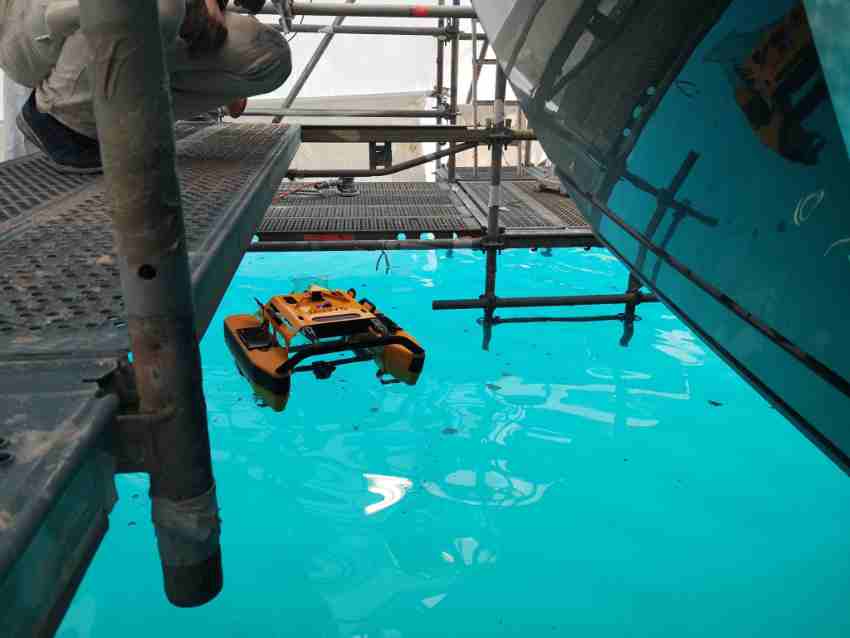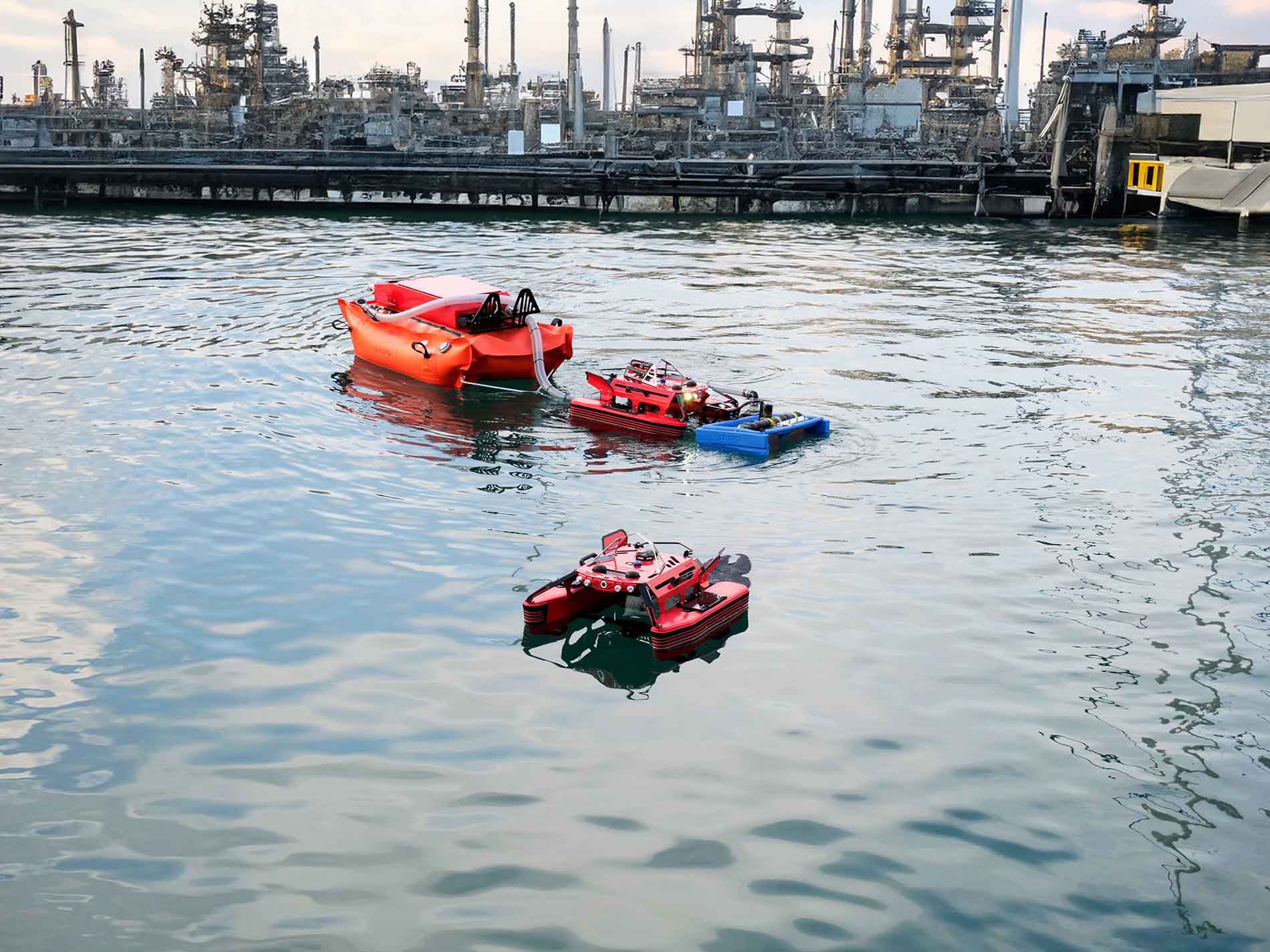Bay West faced the unique challenge of cleaning up a diesel spill in an underground storage tank (UST) containing 2.3 million gallons of glycol solution. Recognizing the complexity of the task, they selected the Jellyfishbot and the Mobile Oil Skimmer to tackle the cleanup. Bay West’s innovative solution not only saved time and money, but also ensured the safety of staff as the drone operators worked safely above ground.
Traditionally, such a task would have required either using a vacuum truck to remove the millions of gallons or sending people down into the tank in a boat—both of which would be costly and risky endeavors. However, IADYS’ aquatic drones proved to be the perfect solution. These robots navigated and cleaned the tank efficiently, performing tasks that would have been difficult, more expensive and/or potentially dangerous.
The drones were deployed in a two-pronged approach. One drone mapped out the tank, identified pockets of oil, and captured diesel fuel with an absorbent trawling attachment. The second drone cleaned the surface of the glycol solution using the mobile oil skimming unit. This process both streamlined the cleanup process and ensured that the tank’s contents met discharge permit requirements.
Bay West’s aquatic drones saved the client both time and money by eliminating the need for costly disposal and hazardous manual labor. Even more importantly, it kept Bay West employees safe from potentially dangerous conditions in the UST. Bay West continues to lead the way in revolutionizing tank maintenance and environmental protection with a constant commitment to safety and new technology.
Bay West LCC ; https://baywest.com/experience/a-new-era-in-underground-tank-cleanup-introducing-bay-wests-aquatic-drones/
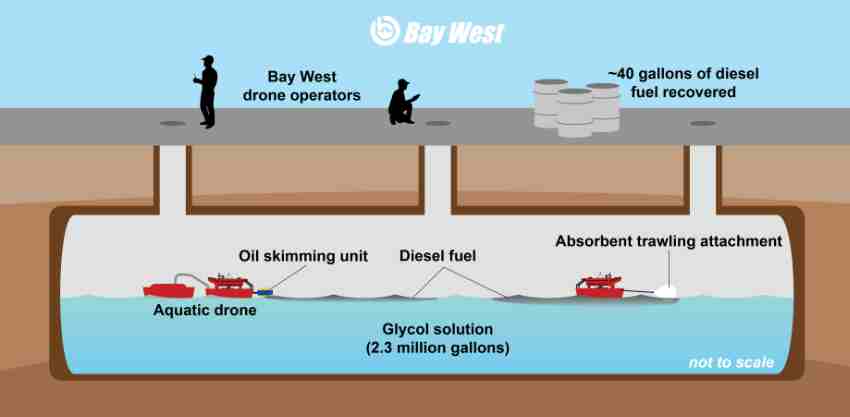
Serpol, depollution of the industrial sites
The Jellyfishbot is the right tool for industrial site depollution services. Its compact size and ease of installation were decisive during IADYS’ work on a former oil depot in the Paris region. One or more nets filled oil absorbents can be attached to the robot for a quick operation. Used as a fleet, the robots can collect both oil and floating waste, allowing for fast, efficient and precise action.
“While we were operating on a depollution work in 2019, we had to find an alternative solution to the ones we used to set up, for recovering the floating oil on groundwater, flushing an excavation work. Indeed, the contextual constraints of this site were not allowing the efficient collection of the oil while guaranteeing the safety of the staff and the appropriate hygiene conditions. Our R&D engineers called on IADYS, which at this time had recently launched a robot able to collect the floating waste and oils, the Jellyfishbot.
Our R&D and field teams have worked in close collaboration with IADYS to adapt the robot to our specific case, and after successful tests we have decided to buy one robot and we managed to follow up on our operation, with total safety. As of today, we are using the Jellyfishbot on some of our sites, when the specs allow it, and we are very pleased by its robustness, its simplicity and its adaptivity.
Working in partnership with IADYS team, that I would describe as ingenious, responsive and shares the same values than us, was a tremendous satisfaction.” – Laurent Mansuelle, Technical Expert for Serpol.

Digoin example for anti-pollution applications
IADYS’ innovative systems are a major asset for the anti-pollution industry. Their speed of installation, compact size and weight, making them easy for a single person to handle, make them essential tools for pollution control personnel.
Following a fire involving several barges in a river port in Digoin, Burgundy, in early 2023, IADYS was called in by experts to clean up the port and lock. With 3 Jellyfishbot robots and the very first prototype of the Mobile Oil Skimmer, the team was able to carry out the clean-up.
The 1st step was to contain the pollution by deploying absorbent booms in the area. The team then collected the macro-waste and debris using Jellyfishbot robots equipped with disposable nets, before making a second pass with milli-waste nets. Once all the debris had been removed, the Mobile Oil Skimmer was used to skim off the oil from a safe distance. For the finishing touches, the Jellyfishbot was equipped with potato nets filled with absorbent spaghetti, or towed absorbent booms to recover the last elements.
After IADYS’ intervention, the barges were refloated and removed from the water. A few weeks later, IADYS returned to Digoin to collect the last of the oil and debris.
DOW CHEMICAL example for industrial applications
The Jellyfishbot plays a pivotal role in mitigating the amount of organic and inorganic solids that are in our site stormwater conveyance systems and reduce the risk of ergonomic stress and heat fatigue. The Jellyfishbot robots are designed to operate autonomously, and this autonomy means that they can tirelessly patrol our internal storm water systems, regardless of weather conditions.
“By removing the need for humans to access water areas in hot and sometime emergency rain flood situations, the water skimmer robots contribute significantly to better worker safety. This shift towards automation not only reduces the physical challenges faced by crews but also allows human resources to be redirected toward more strategic and impactful roles within our operations.
The combination of their autonomous nature and advanced sensor technology enables these robots to navigate and operate in challenging environments with precision, minimizing any potential collisions with walls, existing assets, and sloped banks. This newfound ability to operate independently makes them a powerful and efficient tool. As a result, they not only tirelessly help filter out solids, but also improve the safety of those in charge of overseeing the operation.
We look forward to delivery of the next innovation, a floating docking station, which will allow the robot to dock itself when needed for charging.” – Catherine Tea, Robotics Engineer, Digital Operations Center, Dow Chemical.
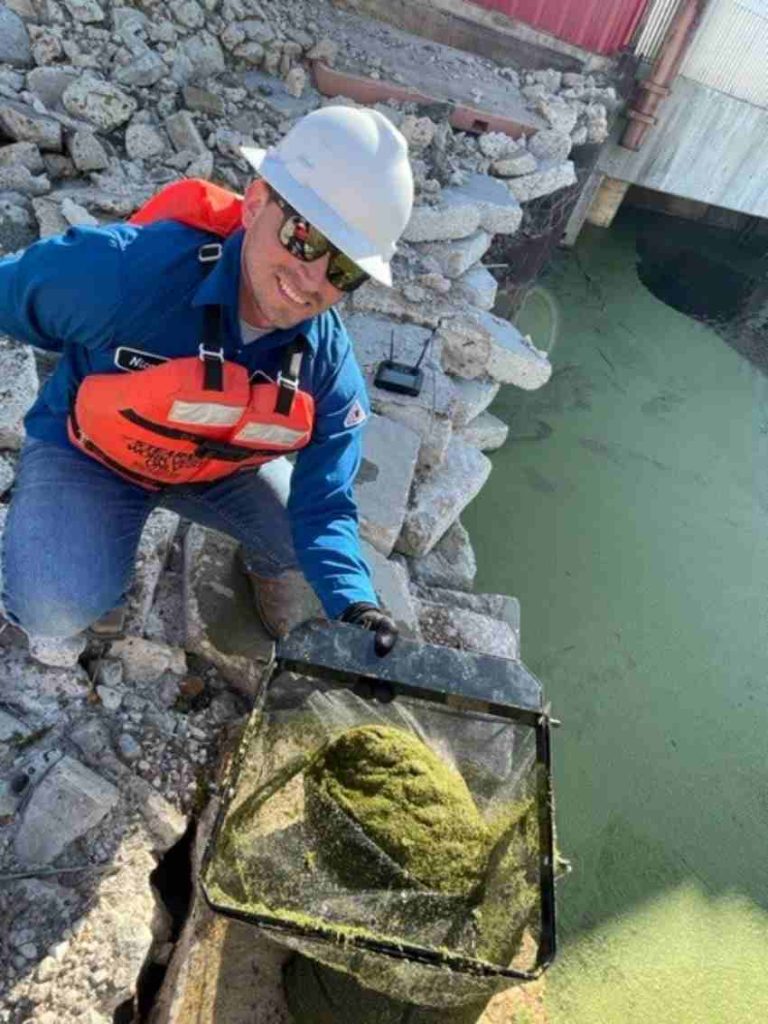
Cassis marina
Cassis marina in the South of France, is the historical partner of the Jellyfishbot: “The marina office acquired the Jellyfishbot in the early months of 2018. We use it twice a week. IADYS company has been doing all their tests in Cassis. We are the first marina to be equipped with the robot. Cassis is recognized for its environmental actions. We are proud to be the Jellyfishbot long-time partner.” Danielle Milon, Cassis Mayor
The mayor of this coastal town was attracted by this ecological concept, improving the working conditions of the town hall employees while marking her commitment to the environment. The port had issues with the accumulation of macro-waste carried by the wind and current. Like all marinas, there was also a problem with oil due to the 400 moorings that make up this small port. The waste usually accumulates between the boats, under the moorings and along the quays and pontoons. The employees used to collect the waste with a simple net and sometimes with a boat to reach debris. Now, the robot collects up to 30 liters of waste per pass, which amounts to more than 3 tons per year. The Jellyfishbot has reinforced the ecological vision of the town, which already organizes clean-up days throughout the year with associations.
It was also in Cassis that IADYS tested the robot’s new autonomy feature.
The micro-waste net (150, 180, 250 or 300 microns) is ideal for this type of service. The Jellyfishbot has proven itself to be very useful to our teams.
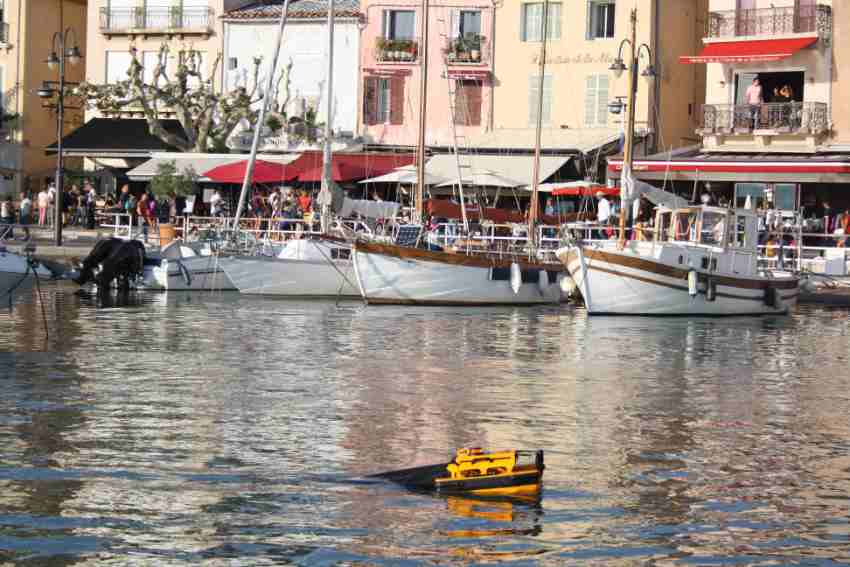
MB92 shipyard in La Ciotat
Thanks to the various sizes of nets that can be attached to the Jellyfishbot, collections are not limited to common waste and oil, but can also include industrial waste such as paint particles. This is one of the problems faced by the MB92 shipyard in La Ciotat. The robot has been called upon on several occasions in recent years by the shipyard’s teams to study its ability to collect particles linked to boat careening.
